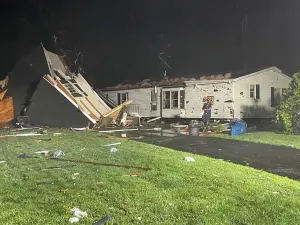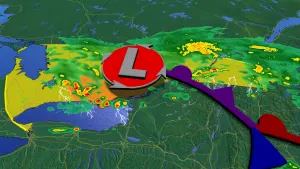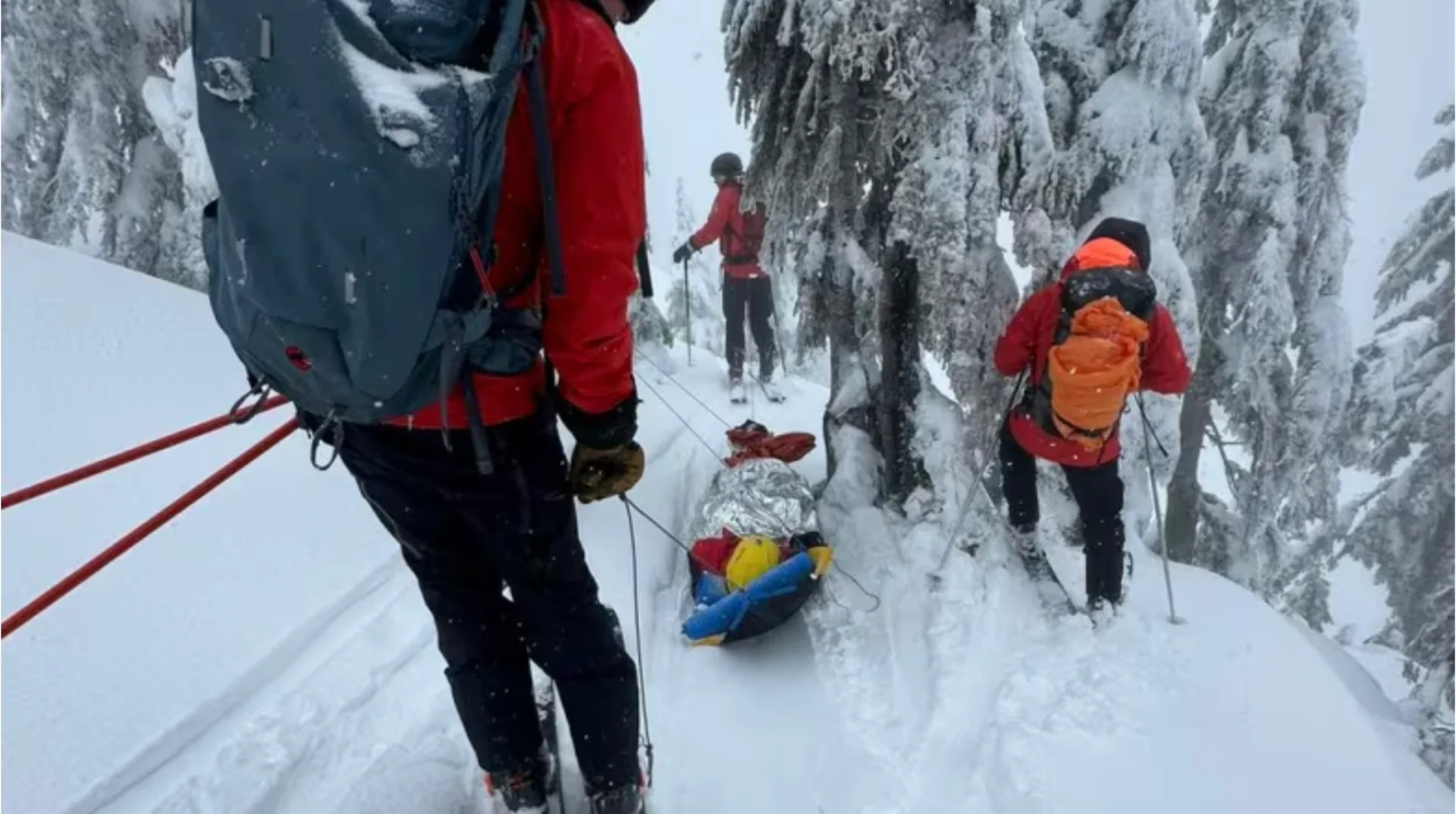
Woman survives being buried by avalanche for almost 20 minutes
Rescuers say a woman is lucky to be alive after she was caught in an avalanche in the North Shore mountains near Vancouver and completely buried upside down for nearly 20 minutes.
The avalanche happened Sunday afternoon on the south face of Pump Peak on Mount Seymour, less than 20 kilometres northeast of downtown Vancouver.
According to the North Shore Rescue (NSR) Facebook page, the woman was snowshoeing with a companion in the backcountry when the avalanche struck and buried them both.
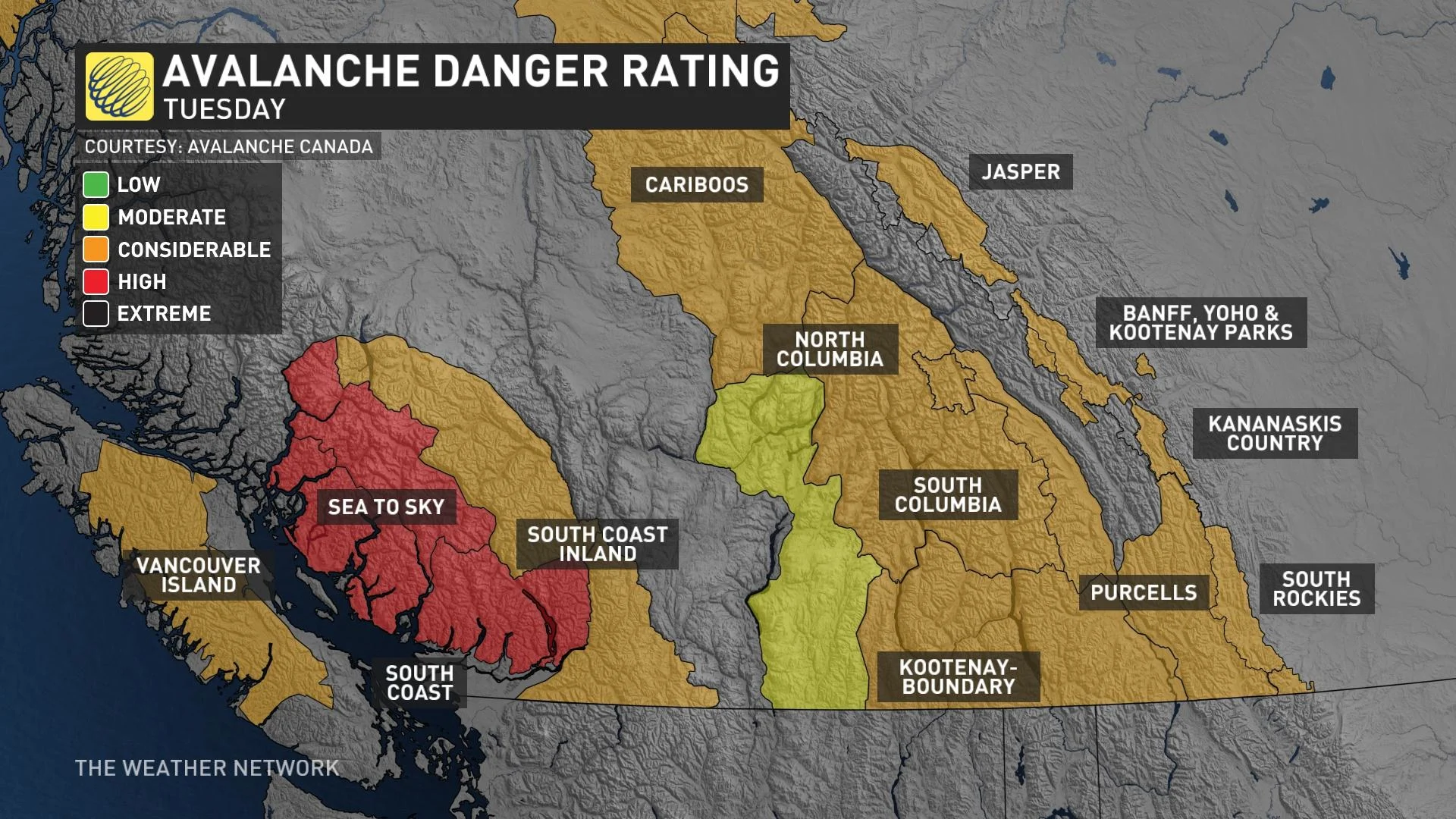
Jim Loree with NSR says the couple, who are in their 30s, were able to get up the trail, but ran into trouble on the way back down.
"[When they] got onto the slope, [one of the snowshoers] basically said he heard a crack, like a gunshot almost, and then all the snow started leaving," Loree told CBC News.
NSR said the man was able to dig himself out and call 911 before locating his companion's snowshoe poking out of the avalanche debris.
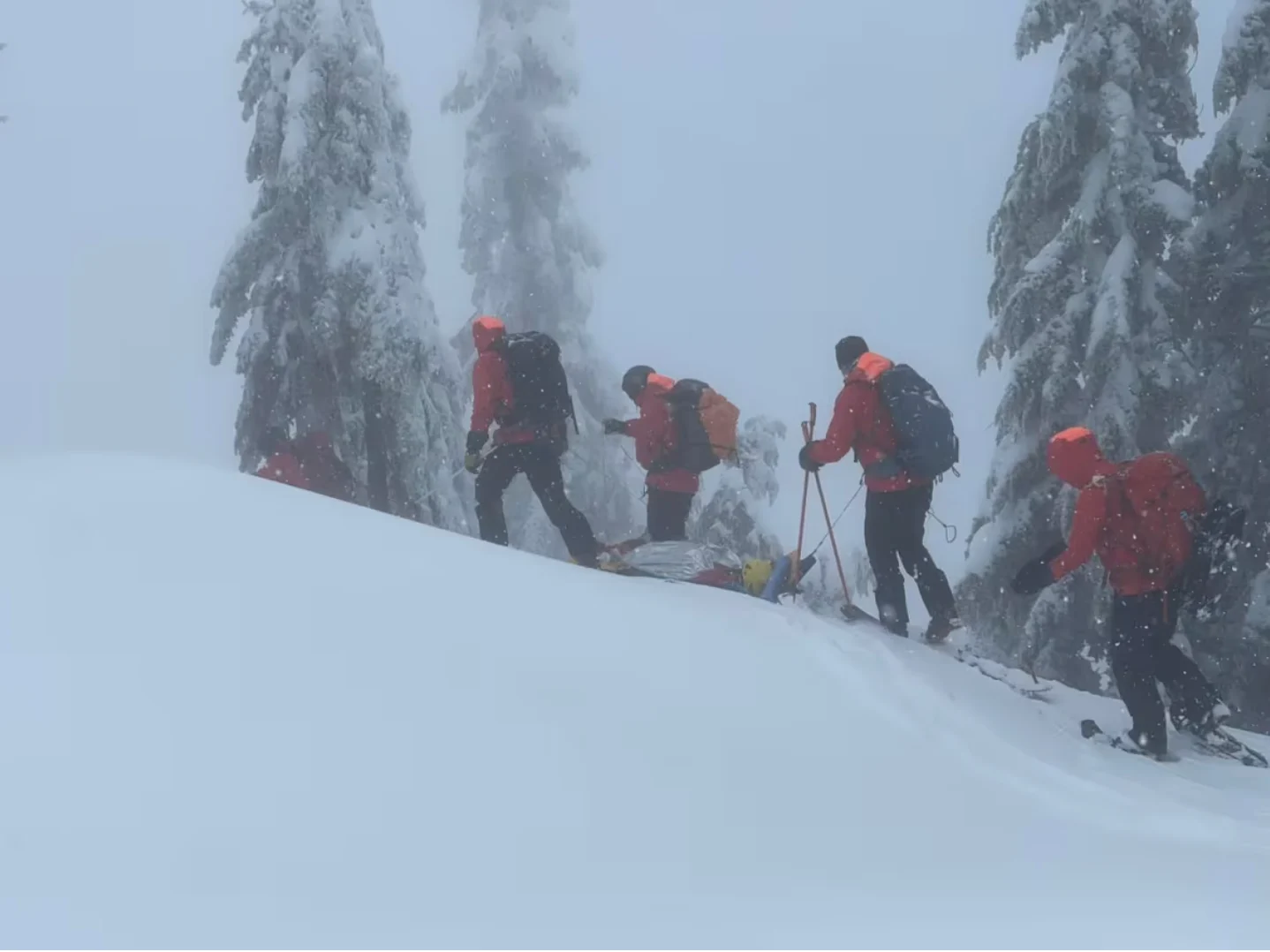
A North Shore Rescue crew moves the woman to safety. The organization says she was lucky to survive, and urge people heading into the mountains to check avalanche conditions. (North Shore Rescue)
RELATED: Going backcountry skiing? Watch this first
They said he was able to uncover the woman, who was responsive, but hypothermic and discoloured from a lack of oxygen.
Rescue field teams were able to reach the scene to provide emergency care. While the man was able to hike down himself, the woman had minor injuries and required support to get down the mountain.
Loree says warmth and fluids helped the woman recover by the time crews reached the Mount Seymour Lodge parking lot. He says the woman opted to leave with her husband, rather than go with first responders to the hospital.
The search and rescue organization says the area where the avalanche took place had been rated as high-danger terrain by Avalanche Canada, with travel not recommended and human-triggered avalanches very likely.
Rescuers say the pair were not carrying rescue gear, such as beacons, probes and shovels, and did not have avalanche training.
"We cannot state strongly enough how lucky they were that the first individual was able to spot the second and dig her out," NSR said on Facebook. "Had this not happened, we would be looking at a very different result."
"In conditions like we had this weekend, it is best to give anything with a slope a rest and let the snowpack settle."
Simon Horton, an Avalanche Canada forecaster, said dangerous avalanche conditions exist across the province due to large amounts of recent snowfall.
In recent days the South Coast mountains have been consistently at Level 4 on its five-level danger scale, he said.
"Most areas had over a metre of snow on the weekend, causing dangerous conditions, and we're expecting another big snowfall on Monday night," Horton said.
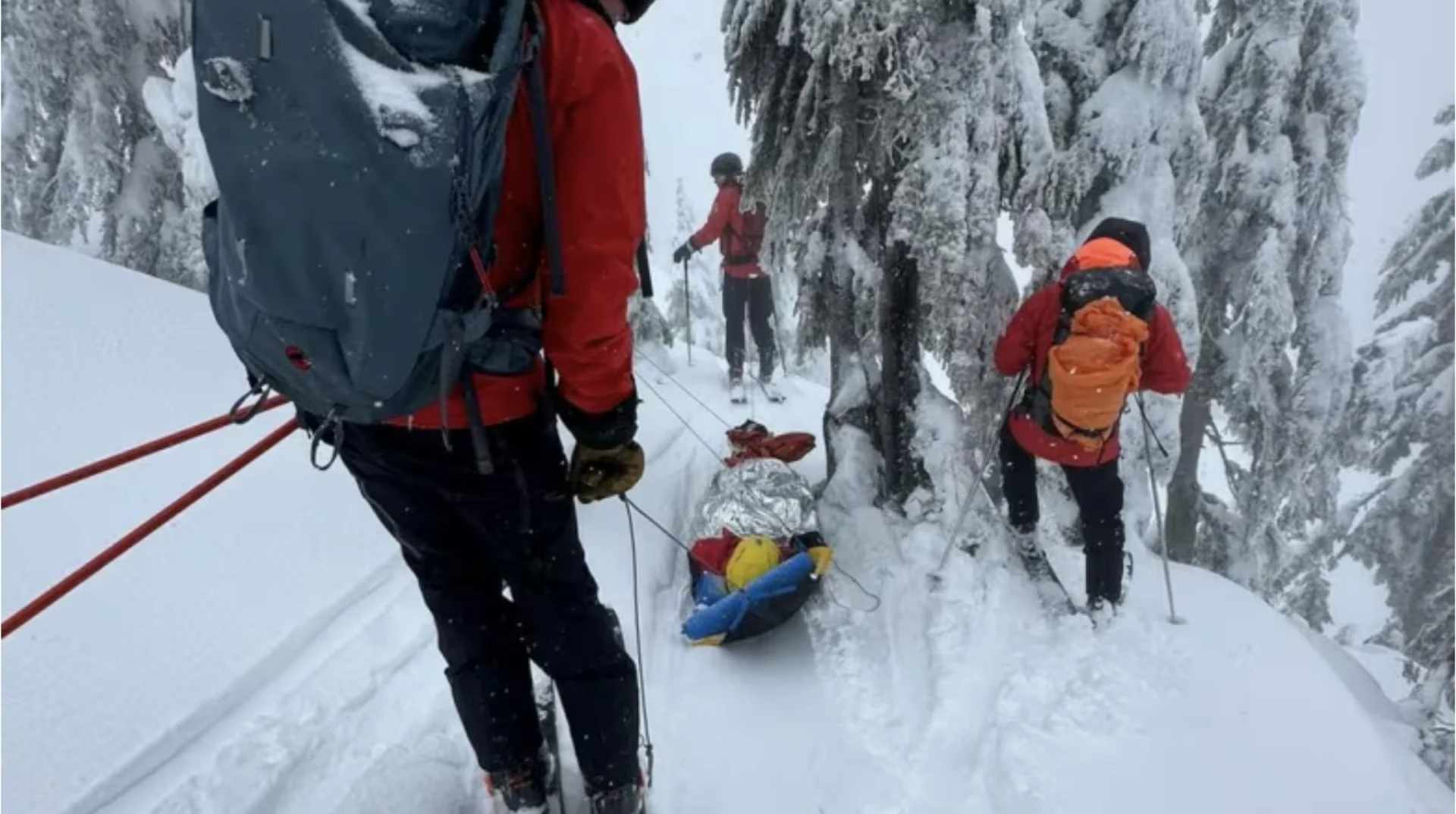
A North Shore Rescue crew moves the avalanche victim down Mount Seymour on a sled. The woman had been trapped under snow for nearly 20 minutes. (North Shore Rescue)
SEE ALSO: Why avalanche risks heighten in March
He said the snowshoers likely triggered the avalanche on Sunday, given the risky conditions.
"Avalanche conditions change day to day, hour by hour … so the key to travelling safely in the backcountry is having basic avalanche training and then monitoring the conditions."
Horton says newer snow loads typically strengthen by bonding with older snowpacks within a few days, but that "it's a little more complicated this time of year."
He says warm weather coming up over the weekend will take the snowpack longer to bond, meaning potentially longer periods of avalanche risk in the weeks ahead.
DON'T MISS: Do not underestimate the hidden dangers of tree wells on the slopes
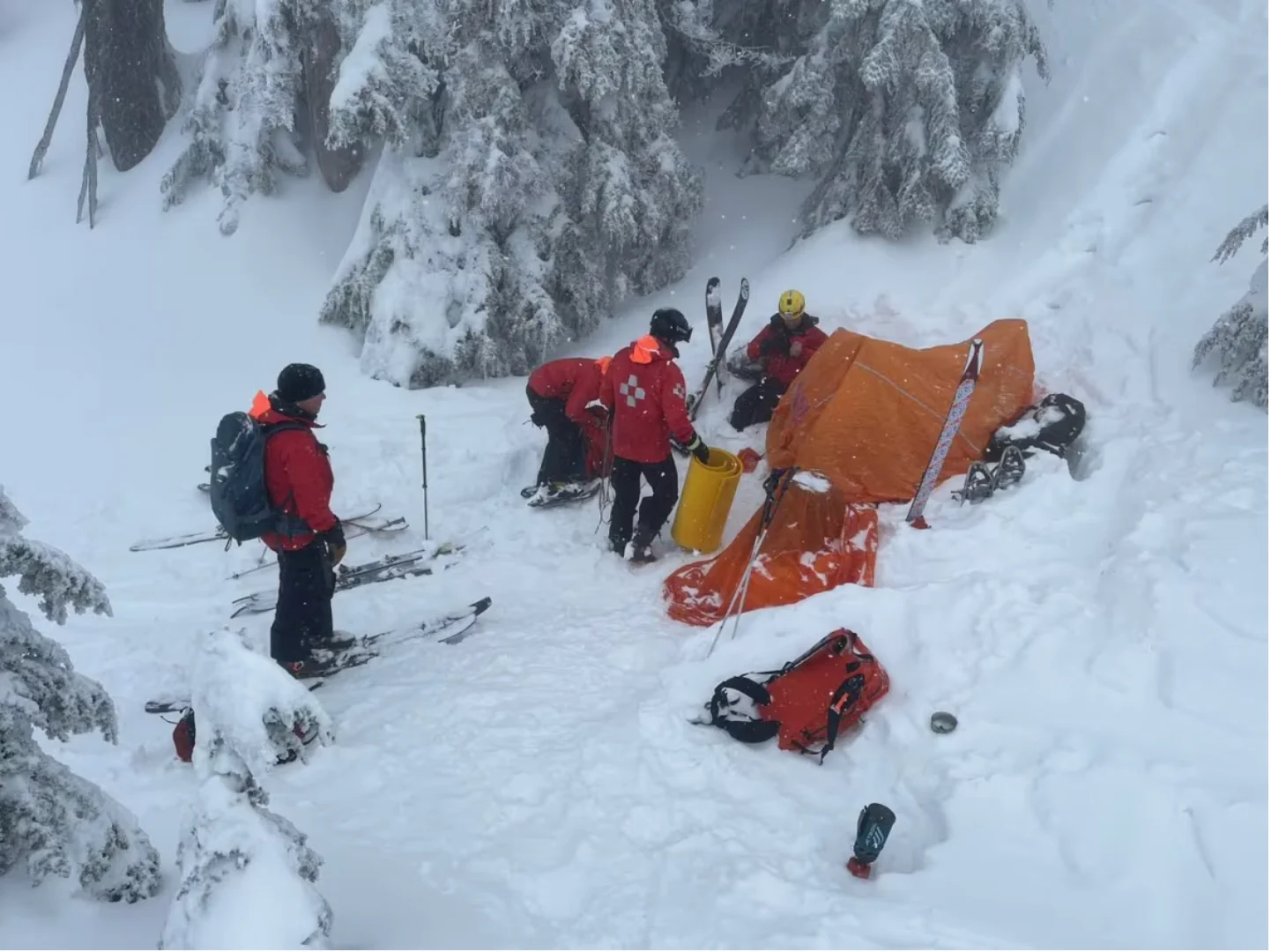
NSR says the man was able to hike back down the mountain himself, but the woman required support getting down. They said the woman had recovered enough to leave with her husband when they reached the base of Mount Seymour. (North Shore Rescue)
Elsewhere, a 19-year-old man from Kelowna, B.C., died after being buried in an avalanche near Canmore, Alta.
Canmore RCMP said in a statement that two men were skiing in the backcountry east of Mount Engadine Lodge when the avalanche struck Sunday afternoon.
One man was able to dig himself out, but the second remained buried. RCMP said the missing man's body was recovered Monday morning with assistance from Kananaskis Mountain Rescue.
WATCH BELOW: This avalanche safety course is essential if entering the backcountry
This article was originally published for CBC News. Contains files from The Canadian Press.







